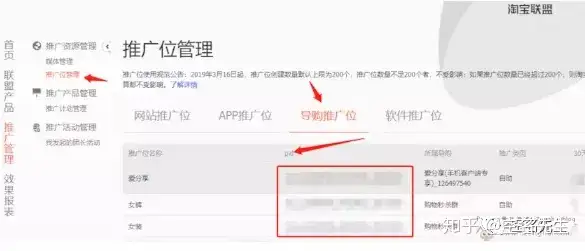介绍
本篇介绍Android获取本机各种类型文件的方法,已经封装成工具类,末尾有源码下载地址。
提示
获取音乐、视频、图片、文档等文件是需要有读取SD卡的权限的,如果是6.0以下的系统,则直接在清单文件中声明SD卡读取权限即可;如果是6.0或以上,则需要动态申请权限。
FileManager的使用
FileManager是封装好的用于获取本机各类文件的工具类,使用方式如:FileManager.getInstance(Context context).getMusics(),使用的是单例模式创建:
private static FileManager mInstance;
private static Context mContext;
private static ContentResolver mContentResolver;
private static Object mLock = new Object();
public static FileManager getInstance(Context context){
if (mInstance == null){
synchronized (mLock){
if (mInstance == null){
mInstance = new FileManager();
mContext = context;
mContentResolver = context.getContentResolver();
}
}
}
return mInstance;
}
获取音乐列表
/**
* 获取本机音乐列表
* @return
*/
public List<Music> getMusics() {
ArrayList<Music> musics = new ArrayList<>();
Cursor c = null;
try {
c = mContentResolver.query(MediaStore.Audio.Media.EXTERNAL_CONTENT_URI, null, null, null,
MediaStore.Audio.Media.DEFAULT_SORT_ORDER);
while (c.moveToNext()) {
String path = c.getString(c.getColumnIndexOrThrow(MediaStore.Audio.Media.DATA));// 路径
if (FileUtils.isExists(path)) {
continue;
}
String name = c.getString(c.getColumnIndexOrThrow(MediaStore.Audio.Media.DISPLAY_NAME)); // 歌曲名
String album = c.getString(c.getColumnIndexOrThrow(MediaStore.Audio.Media.ALBUM)); // 专辑
String artist = c.getString(c.getColumnIndexOrThrow(MediaStore.Audio.Media.ARTIST)); // 作者
long size = c.getLong(c.getColumnIndexOrThrow(MediaStore.Audio.Media.SIZE));// 大小
int duration = c.getInt(c.getColumnIndexOrThrow(MediaStore.Audio.Media.DURATION));// 时长
int time = c.getInt(c.getColumnIndexOrThrow(MediaStore.Audio.Media._ID));// 歌曲的id
// int albumId = c.getInt(c.getColumnIndexOrThrow(MediaStore.Audio.Media.ALBUM_ID));
Music music = new Music(name, path, album, artist, size, duration);
musics.add(music);
}
} catch (Exception e) {
e.printStackTrace();
} finally {
if (c != null) {
c.close();
}
}
return musics;
}
FileUtils中判断文件是否存在的方法isExists(String path),代码为:
/**
* 判断文件是否存在
* @param path 文件的路径
* @return
*/
public static boolean isExists(String path) {
File file = new File(path);
return file.exists();
}
音乐的bean类Music代码为:
public class Music implements Comparable<Music> {
/**歌曲名*/
private String name;
/**路径*/
private String path;
/**所属专辑*/
private String album;
/**艺术家(作者)*/
private String artist;
/**文件大小*/
private long size;
/**时长*/
private int duration;
/**歌曲名的拼音,用于字母排序*/
private String pinyin;
public Music(String name, String path, String album, String artist, long size, int duration) {
this.name = name;
this.path = path;
this.album = album;
this.artist = artist;
this.size = size;
this.duration = duration;
pinyin = PinyinUtils.getPinyin(name);
}
… //此处省略setter和getter方法
}
PinyinUtils根据名字获取拼音,主要是用于音乐列表A-Z的排序,需要依赖pinyin4j.jar,获取拼音的方法getPinyin(String name)代码为:
public static String getPinyin(String str) {
// 设置拼音结果的格式
HanyuPinyinOutputFormat format = new HanyuPinyinOutputFormat();
format.setCaseType(HanyuPinyinCaseType.UPPERCASE);// 设置为大写形式
format.setToneType(HanyuPinyinToneType.WITHOUT_TONE);// 不用加入声调
StringBuilder sb = new StringBuilder();
char[] charArray = str.toCharArray();
for (int i = 0; i < charArray.length; i++) {
char c = charArray[i];
if (Character.isWhitespace(c)) {// 如果是空格则跳过
continue;
}
if (isHanZi(c)) {// 如果是汉字
String s = “”;
try {
// toHanyuPinyinStringArray 返回一个字符串数组是因为该汉字可能是多音字,此处只取第一个结果
s = PinyinHelper.toHanyuPinyinStringArray(c, format)[0];
sb.append(s);
} catch (BadHanyuPinyinOutputFormatCombination e) {
e.printStackTrace();
sb.append(s);
}
} else {
// 不是汉字
if (i == 0) {
if (isEnglish(c)) {// 第一个属于字母,则返回该字母
return String.valueOf(c).toUpperCase(Locale.ENGLISH);
}
return “#”; // 不是的话返回#号
}
}
}
return sb.toString();
}
获取视频列表
/**
* 获取本机视频列表
* @return
*/
public List<Video> getVideos() {
List<Video> videos = new ArrayList<Video>();
Cursor c = null;
try {
// String[] mediaColumns = { “_id”, “_data”, “_display_name”,
// “_size”, “date_modified”, “duration”, “resolution” };
c = mContentResolver.query(MediaStore.Video.Media.EXTERNAL_CONTENT_URI, null, null, null, MediaStore.Video.Media.DEFAULT_SORT_ORDER);
while (c.moveToNext()) {
String path = c.getString(c.getColumnIndexOrThrow(MediaStore.Video.Media.DATA));// 路径
if (!FileUtils.isExists(path)) {
continue;
}
int id = c.getInt(c.getColumnIndexOrThrow(MediaStore.Video.Media._ID));// 视频的id
String name = c.getString(c.getColumnIndexOrThrow(MediaStore.Video.Media.DISPLAY_NAME)); // 视频名称
String resolution = c.getString(c.getColumnIndexOrThrow(MediaStore.Video.Media.RESOLUTION)); //分辨率
long size = c.getLong(c.getColumnIndexOrThrow(MediaStore.Video.Media.SIZE));// 大小
long duration = c.getLong(c.getColumnIndexOrThrow(MediaStore.Video.Media.DURATION));// 时长
long date = c.getLong(c.getColumnIndexOrThrow(MediaStore.Video.Media.DATE_MODIFIED));//修改时间
Video video = new Video(id, path, name, resolution, size, date, duration);
videos.add(video);
}
} catch (Exception e) {
e.printStackTrace();
} finally {
if (c != null) {
c.close();
}
}
return videos;
}
其中,视频的bean类Video代码为:
public class Video {
private int id = 0;
private String path = null;
private String name = null;
private String resolution = null;// 分辨率
private long size = 0;
private long date = 0;
private long duration = 0;
public Video(int id, String path, String name, String resolution, long size, long date, long duration) {
this.id = id;
this.path = path;
this.name = name;
this.resolution = resolution;
this.size = size;
this.date = date;
this.duration = duration;
}
… //此处省略setter和getter方法
}
通过本地视频id获取视频缩略图
// 获取视频缩略图
public Bitmap getVideoThumbnail(int id) {
Bitmap bitmap = null;
BitmapFactory.Options options = new BitmapFactory.Options();
options.inDither = false;
options.inPreferredConfig = Bitmap.Config.ARGB_8888;
bitmap = MediaStore.Video.Thumbnails.getThumbnail(mContentResolver, id, MediaStore.Images.Thumbnails.MICRO_KIND, options);
return bitmap;
}
上面获取视频列表的方法中,Video对象中有一个属性是id,通过传入这个id可以获取到视频缩略图的Bitmap对象。
获取本机所有图片文件夹
/**
* 得到图片文件夹集合
*/
public List<ImgFolderBean> getImageFolders() {
List<ImgFolderBean> folders = new ArrayList<ImgFolderBean>();
// 扫描图片
Cursor c = null;
try {
c = mContentResolver.query(MediaStore.Images.Media.EXTERNAL_CONTENT_URI, null,
MediaStore.Images.Media.MIME_TYPE + “= ? or ” + MediaStore.Images.Media.MIME_TYPE + “= ?”,
new String[]{“image/jpeg”, “image/png”}, MediaStore.Images.Media.DATE_MODIFIED);
List<String> mDirs = new ArrayList<String>();//用于保存已经添加过的文件夹目录
while (c.moveToNext()) {
String path = c.getString(c.getColumnIndex(MediaStore.Images.Media.DATA));// 路径
File parentFile = new File(path).getParentFile();
if (parentFile == null)
continue;
String dir = parentFile.getAbsolutePath();
if (mDirs.contains(dir))//如果已经添加过
continue;
mDirs.add(dir);//添加到保存目录的集合中
ImgFolderBean folderBean = new ImgFolderBean();
folderBean.setDir(dir);
folderBean.setFistImgPath(path);
if (parentFile.list() == null)
continue;
int count = parentFile.list(new FilenameFilter() {
@Override
public boolean accept(File dir, String filename) {
if (filename.endsWith(“.jpeg”) || filename.endsWith(“.jpg”) || filename.endsWith(“.png”)) {
return true;
}
return false;
}
}).length;
folderBean.setCount(count);
folders.add(folderBean);
}
} catch (Exception e) {
e.printStackTrace();
} finally {
if (c != null) {
c.close();
}
}
return folders;
}
其中,图片文件夹的bean类ImgFolderBean代码为:
public class ImgFolderBean {
/**当前文件夹的路径*/
private String dir;
/**第一张图片的路径,用于做文件夹的封面图片*/
private String fistImgPath;
/**文件夹名*/
private String name;
/**文件夹中图片的数量*/
private int count;
public ImgFolderBean(String dir, String fistImgPath, String name, int count) {
this.dir = dir;
this.fistImgPath = fistImgPath;
this.name = name;
this.count = count;
}
… //此处省略setter和getter方法
}
获取图片文件夹下的图片路径的集合
/**
* 通过图片文件夹的路径获取该目录下的图片
*/
public List<String> getImgListByDir(String dir) {
ArrayList<String> imgPaths = new ArrayList<>();
File directory = new File(dir);
if (directory == null || !directory.exists()) {
return imgPaths;
}
File[] files = directory.listFiles();
for (File file : files) {
String path = file.getAbsolutePath();
if (FileUtils.isPicFile(path)) {
imgPaths.add(path);
}
}
return imgPaths;
}
获取本机已安装应用列表
/**
* 获取已安装apk的列表
*/
public List<AppInfo> getAppInfos() {
ArrayList<AppInfo> appInfos = new ArrayList<AppInfo>();
//获取到包的管理者
PackageManager packageManager = mContext.getPackageManager();
//获得所有的安装包
List<PackageInfo> installedPackages = packageManager.getInstalledPackages(0);
//遍历每个安装包,获取对应的信息
for (PackageInfo packageInfo : installedPackages) {
AppInfo appInfo = new AppInfo();
appInfo.setApplicationInfo(packageInfo.applicationInfo);
appInfo.setVersionCode(packageInfo.versionCode);
//得到icon
Drawable drawable = packageInfo.applicationInfo.loadIcon(packageManager);
appInfo.setIcon(drawable);
//得到程序的名字
String apkName = packageInfo.applicationInfo.loadLabel(packageManager).toString();
appInfo.setApkName(apkName);
//得到程序的包名
String packageName = packageInfo.packageName;
appInfo.setApkPackageName(packageName);
//得到程序的资源文件夹
String sourceDir = packageInfo.applicationInfo.sourceDir;
File file = new File(sourceDir);
//得到apk的大小
long size = file.length();
appInfo.setApkSize(size);
System.out.println(“—————————“);
System.out.println(“程序的名字:” + apkName);
System.out.println(“程序的包名:” + packageName);
System.out.println(“程序的大小:” + size);
//获取到安装应用程序的标记
int flags = packageInfo.applicationInfo.flags;
if ((flags & ApplicationInfo.FLAG_SYSTEM) != 0) {
//表示系统app
appInfo.setIsUserApp(false);
} else {
//表示用户app
appInfo.setIsUserApp(true);
}
if ((flags & ApplicationInfo.FLAG_EXTERNAL_STORAGE) != 0) {
//表示在sd卡
appInfo.setIsRom(false);
} else {
//表示内存
appInfo.setIsRom(true);
}
appInfos.add(appInfo);
}
return appInfos;
}
其中,安装包信息的bean类AppInfo代码为:
public class AppInfo {
private ApplicationInfo applicationInfo;
private int versionCode = 0;
/**
* 图片的icon
*/
private Drawable icon;
/**
* 程序的名字
*/
private String apkName;
/**
* 程序大小
*/
private long apkSize;
/**
* 表示到底是用户app还是系统app
* 如果表示为true 就是用户app
* 如果是false表示系统app
*/
private boolean isUserApp;
/**
* 放置的位置
*/
private boolean isRom;
/**
* 包名
*/
private String apkPackageName;
… //此处省略setter和getter方法
}
获取文档、压缩包、apk安装包等
/**
* 通过文件类型得到相应文件的集合
**/
public List<FileBean> getFilesByType(int fileType) {
List<FileBean> files = new ArrayList<FileBean>();
// 扫描files文件库
Cursor c = null;
try {
c = mContentResolver.query(MediaStore.Files.getContentUri(“external”), new String[]{“_id”, “_data”, “_size”}, null, null, null);
int dataindex = c.getColumnIndex(MediaStore.Files.FileColumns.DATA);
int sizeindex = c.getColumnIndex(MediaStore.Files.FileColumns.SIZE);
while (c.moveToNext()) {
String path = c.getString(dataindex);
if (FileUtils.getFileType(path) == fileType) {
if (!FileUtils.isExists(path)) {
continue;
}
long size = c.getLong(sizeindex);
FileBean fileBean = new FileBean(path, FileUtils.getFileIconByPath(path));
files.add(fileBean);
}
}
} catch (Exception e) {
e.printStackTrace();
} finally {
if (c != null) {
c.close();
}
}
return files;
}
传入的fileType文件类型是在FileUtils定义的文件类型声明:
/**文档类型*/
public static final int TYPE_DOC = 0;
/**apk类型*/
public static final int TYPE_APK = 1;
/**压缩包类型*/
public static final int TYPE_ZIP = 2;
其中,FileUtils根据文件路径获取文件类型的方法getFileType(String path)为:
public static int getFileType(String path) {
path = path.toLowerCase();
if (path.endsWith(“.doc”) || path.endsWith(“.docx”) || path.endsWith(“.xls”) || path.endsWith(“.xlsx”)
|| path.endsWith(“.ppt”) || path.endsWith(“.pptx”)) {
return TYPE_DOC;
}else if (path.endsWith(“.apk”)) {
return TYPE_APK;
}else if (path.endsWith(“.zip”) || path.endsWith(“.rar”) || path.endsWith(“.tar”) || path.endsWith(“.gz”)) {
return TYPE_ZIP;
}else{
return -1;
}
}
文件的bean类FileBean代码为:
public class FileBean {
/** 文件的路径*/
public String path;
/**文件图片资源的id,drawable或mipmap文件中已经存放doc、xml、xls等文件的图片*/
public int iconId;
public FileBean(String path, int iconId) {
this.path = path;
this.iconId = iconId;
}
}
FileUtils根据文件类型获取图片资源id的方法,getFileIconByPath(path)代码为:
/**通过文件名获取文件图标*/
public static int getFileIconByPath(String path){
path = path.toLowerCase();
int iconId = R.mipmap.unknow_file_icon;
if (path.endsWith(“.txt”)){
iconId = R.mipmap.type_txt;
}else if(path.endsWith(“.doc”) || path.endsWith(“.docx”)){
iconId = R.mipmap.type_doc;
}else if(path.endsWith(“.xls”) || path.endsWith(“.xlsx”)){
iconId = R.mipmap.type_xls;
}else if(path.endsWith(“.ppt”) || path.endsWith(“.pptx”)){
iconId = R.mipmap.type_ppt;
}else if(path.endsWith(“.xml”)){
iconId = R.mipmap.type_xml;
}else if(path.endsWith(“.htm”) || path.endsWith(“.html”)){
iconId = R.mipmap.type_html;
}
return iconId;
}
上述各种文件类型的图片放置在mipmap中,用于展示文件列表时展示。
FileManager以及其他类的源码,可以点击下面的网址跳转查看和下载:
点击查看源码(phone目录下的文件)
作者:chaychan
链接:
http://www.imooc.com/article/23266
来源:慕课网
本文原创发布于慕课网 ,转载请注明出处,谢谢合作
推荐阅读:
接手别人的代码,死的心有吗?
普通的程序员和大神级的程序员有什么区别?
网上黑程序员的现实依据是什么?程序员真的那么悲惨吗?
有哪些视频堪称有毒?
暴露真实IP真的没关系吗?
有哪些程序员特有的习惯?
月薪3万的程序员都避开了哪些坑?
和程序猿谈恋爱是一种怎样的体验?








